
After 430 kilometres, just when midnight was approaching, I felt like I had taken psychedelic pills. I had just ridden from Sweden into Norway and my nose suddenly seemed to have become hyper sensitive.
I was on my own on a narrow road and had been awake for some 39 hours. A dense, ancient-looking forest was on my right, filling the air with a very special smell – at times rather sweet, sometimes boggy and occasionally earthy. It changed time and again.
I had left Umeå, a charming university town 600 kilometres north of Stockholm, 24 hours earlier. I was one of 71 cyclists taking part in the second edition of a 1200 kilometre Audax called the Midnight Sun Randonnée, a long-distance cycling event with a time limit of 90 hours organised by the Swedish club Cykelintresse. The ride had started at sunset, which was at 11:07pm.
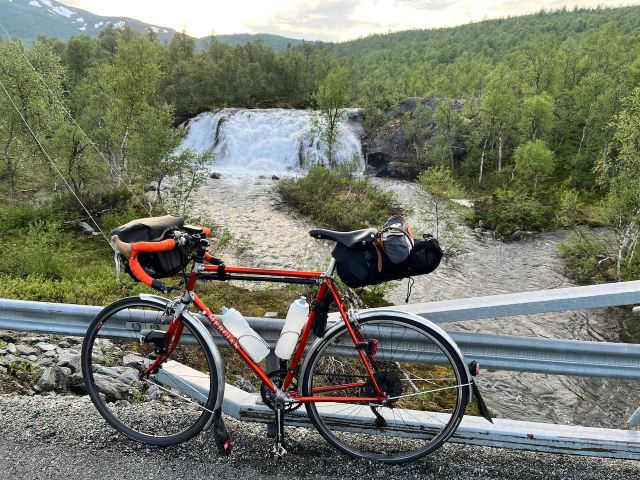
When I was entering Norway, the setting was spectacular. The sky was clear and lit by gentle nocturnal twilight. To my left I saw a mountain and a number of slim, elegant waterfalls. In front of it was a tranquil lake with remnants of ice in the middle. To the right of the road the terrain was ascending and covered with old trees, their tops immersed in mist.
This was what long distance cycling was all about. This was what Norway was about. When I later asked a hotel owner what I had smelled when cycling through the forest, he simply answered: “It was just fresh air.”
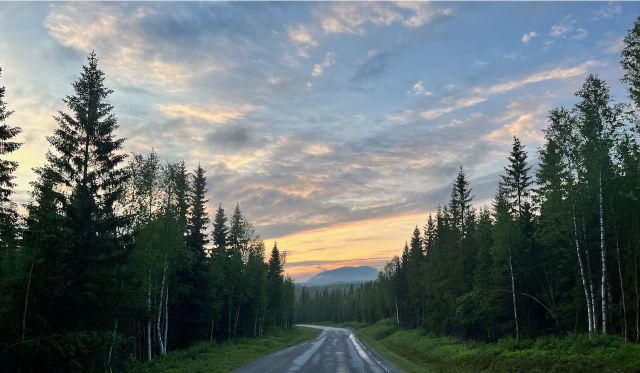
I had first heard about the Midnight Sun Randonée eight months earlier. It was in the middle of a long winter and I was trying to spend an hour every morning in the basement on my indoor trainer. I had half-heartedly decided to ride Paris-Brest-Paris (PBP) in the summer of 2023 for the third time. But for various reasons, my heart wasn’t really in it. I was intrigued by MSR as I’ve had a special relationship with Scandinavia since my childhood days. My parents were lifelong Scandinavia lovers, and in the 1980s they spent many summers with me in Sweden and Norway.
In the early 1990, I also did my first first solo bike tour in the area. The trip was a complete disaster. My 12 speed bike was not up for the climbs, and neither was I. Taking several hardcover books on a hilly bike tour might not have been my smartest idea, and the weather was awful. I aborted the tour early.
So I had an account to settle with Sweden and Norway, and the Midnight Sun Randonée seemed like the ideal opportunity.
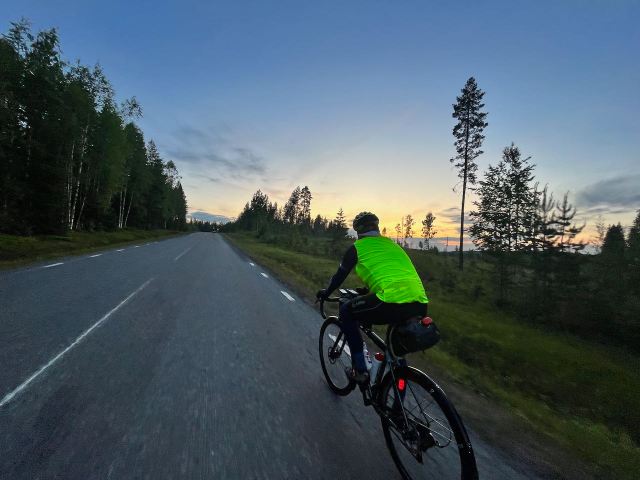
Fear
When signing on for it, I was uncertain if I could cope. I had finished Paris-Brest-Paris in 2015 and 2019 as well as London-Edinburgh-London in 2017. During the pandemic, I had lost a bit of my long-distance cycling mojo and gained some weight. I had abandoned a 1500 km ride (Berlin-Munich-Berlin) in 2021 after a mere 400km, and could not be on the startline of London-Edinburgh-London last year as I had caught Covid in late May. (On the upside, I could entirely focus on my role as the volunteer coordinator for LEL 2022, which was also a really great experience.)
MSR seemed like a daunting event not just with regard to the distance. While the climbing appeared ok, (less than 10000 metres compared to 12000 at PBP), the weather was a big risk as I knew from my 30-year old Scandinavia experience. During MSR’s first edition in 2022, night temperatures dropped to zero degrees and it rained a lot. Some riders suffered serious hyperthermia.
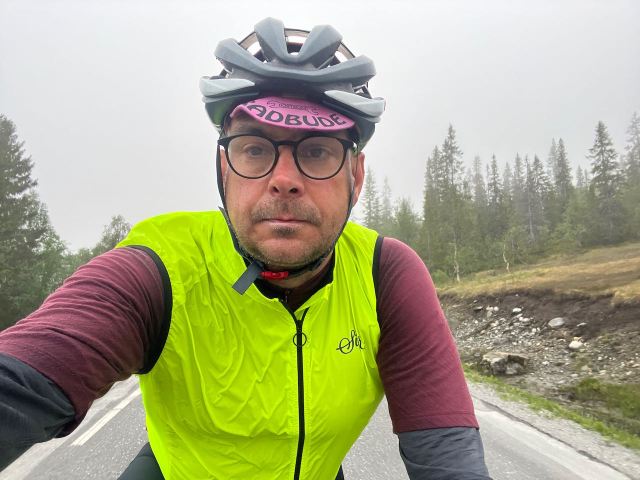
I knew I only stood a chance of finishing if I was perfectly prepared, and the work towards MSR started in my basement in late 2022. After years of toying with the idea, I had finally bought an indoor trainer. To my big surprise, I enjoyed structured training. I did about the same amount of outdoor cycling between October and April as in previous years but spent as much time on the indoor trainer. The effect was remarkable as I got noticeable faster, in particular on hills.
While my legs were getting better, my head was still a problem. Long distance cycling is as much a mental game as a physical one. During the pandemic, I had developed a habit of bailing out on longer rides when things became too unpleasant. As even the strongest riders have their dark moments on long rides, this is really not a winning strategy for long distance cycling.

My mental game changer came in March. I took part in a very early 600 km ride organised by Audax Suisse, starting in Bellinzona in Switzerland and ending in Florence in Italy. I felt very rough when approaching Bologna after some 420 kilometres. Tired, concerned about the Apennine mountains I had to cross next, and certain to miss the time limit, I lost my will to finish. However, I reconsidered after learning that I would have to wait hours for the next train with bike transport to Florence. I also thought of cycling friends who had mastered much more demanding rides in the face of much bigger adversity.

“Sod it, forget about time limit. I will get this done,” I told myself. I had a nice lunch in a lovely family-run restaurant, and then stopped for ice cream in Bologna. The following nightly ride on empty roads across the Apennines turned out to be a very special experience. As an unexpected bonus, I even managed to scrape through with regard to the time limit, finishing with 5 minutes to spare inside the 40 hour time limit. An old Audax insight had once again proven itself: “Always remember: No matter how bad you feel, it will get better if you carry on.”

I had finally regained the mental fortitude required to master really long rides. What followed in spring was a series of extremely wet and rather cold long distance rides, followed by a glorious 400 in May and a 600 in early June. I had also done some shorter, really hilly rides which had hardened my legs as well as my self-confidence. I travelled to Sweden feeling that I had done all I could do to prepare myself well for MSR. I was quite certain that, barring a crash, a breakdown of my bike or other disasters, I should be able to finish.
My concerns about the weather proved unnecessary. For the most part the conditions were close to ideal: cloudless skies, a lot of sun and dry, not too cold nights. If there was wind, it was a tailwind. It was 27 degrees at the Arctic Circle! From a climate change perspective, that might be alarming, but for a cyclist on a long ride, it was glorious. During the last night, there were several hours of heavy rain, but at least temperatures did not drop too much. Compared to my wet and cold rides in spring, this was merely a footnote.
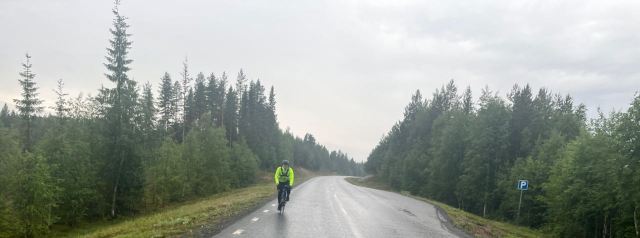
Like on any long ride, and despite the good preparation, the near-perfect conditions and the epic vistas, I had my low moments. There were times when I was cursing the route choice (the gravel!), the food (elk meet again!), one insanely reckless driver (Don’t kill me!), and long sections between controls (Are we there yet?).
I have to admit that at one point, I actually got bored by the landscape. I found the final 370 kilometres south of Arjeplog dull, repetitive and boring. The route followed a wide and straight road that was built on slightly elevated terrain and had large, wide ditches on both sides. It cut through forests for hundreds of kilometres without a turn. The terrain was rather flat, and the views rarely changed. Fortunately there was next to no traffic.

That was different on some parts of the route in Norway. For some 150km from south of Mo-i-Rana to the Arctic Circle, the route followed the E6 – the area’s most important road. It was busy both with camper vans and lorries. I have a relatively high tolerance for traffic and never felt unsafe. Some other riders complained a lot about the drivers on the E6.
The busy parts as well as the boring ones were the price we had to pay for the unbelievably beautiful parts. Those were special. My favourite was the section described at the beginning, which is aptly named Saga Vägen (Fairy tale road) as well as the subsequent “Wilderness Road” between Hattfjelldal and Korgen through the Vefsna Regional Park (those bits were quite demanding as the road was undulating). A third mind-blowing section was the section from the Arctic Circle Center through Junkerdal back into Sweden. I know it sounds absurd, but parts of Junkerdal reminded me of the Tramuntana in Mallorca. All of those roads were among the most scenic ones I have ever ridden on.
People
Meeting nice and interesting people is one of things I like the most about long distance cycling. Chatting to other riders is a unique opportunity to meet people from various aspects of life you normally don’t have access to, and to talk to them for hours and hours.
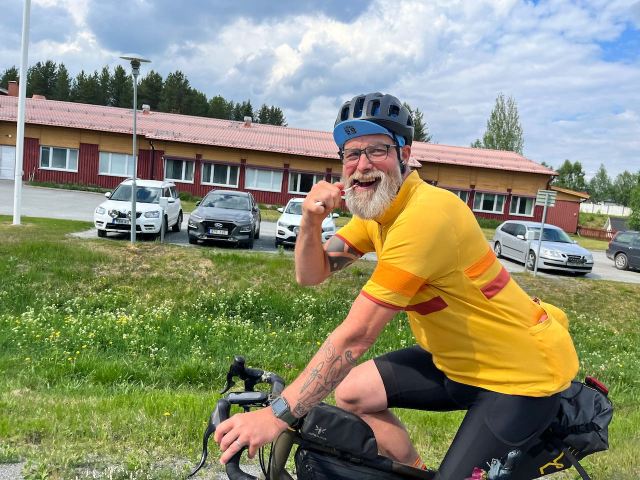
On MSR I made some sterling new friends on the road. One of them was Tuomo, a youngish Finnish rider who was travelling at roughly my speed. We rode together several sections on the first two days and I seem to have dissuaded him from quitting at the half-way point, when I tersely told him that he was doing absolutely fine time-wise and that finishing out of time was not a disgrace. We later teamed up for the long and lonely section during the final night where we chatted away continuously, not noticing how time passed and how boring the woodlands were.
A second great new companion was Frederik, a Belgian rider who had lived in Sweden for years and was about to move back to Belgium. He was much faster than me but had to recover his misplaced phone. He then kept me company between the Arctic Circle and Norway, marvelling at the amazing scenery of sunlit snowfields, quiet lakes and treeless hills while talking about everything and the rest of it.

From Tuomo and Frederik, I learnt a lot about a wide selection of topics ranging from the life of a professional break dancer (hard but fun), the Finnish army (very efficient), the Swedish health care system (avoid at any cost) and life in Sweden (not easy to find real friends). I even learnt what a common cause of death for Fins after Midsummer parties is: drowning. (People drink too much, go fishing on their own on a boat, and fall overboard while trying to have a pee.)
Decisions
On an Audax, very much like in real life, you sometimes have to make awkward decisions. I was facing one when I was arriving at the control in Sorsele after 950 kilometres. The next section seemed like one of the most difficult. The next control was 160 kilometres away, and the route went through the Vindelfjällen Nature Reserve, the largest Swedish protected area in Sweden. There was nothing but woodlands and the river Vindeln in between. Florian, the chief organiser of MSR, had warned me that temperatures at night could fall dramatically as the road was following the river closely. Moreover, after three days of perfect weather, heavy rain was forecasted for the evening and night.
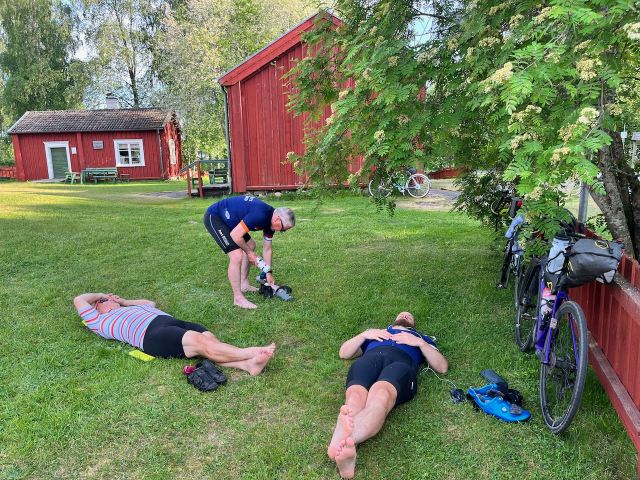
I arrived at Sorsele at about 4pm in the afternoon after a day of solo riding. Just before the controls I met two of my German cycling friends. Cycling with them into the night rather than on my own was an appealing proposition. The snag was that they wanted to get back on the road as soon as possible after having some food at the control. I was planning to have an hour of sleep before leaving. I was concerned that I might be hit by extreme tiredness in the late evening. With the poor weather, and the lack of shelter on the way, that was a scenario I was keen to avoid. With a heavy heart, I told my two mates to leave without me.
A few minutes later I knew that this had been precisely the right call as I met Tuomo again. He also wanted to get some rest, and we agreed to leave together after an hour.

I was fast asleep and did not immediately hear my alarm clock. Tuomo and I left, and for the first hours, the ride, the weather was still holding up well. There was a brief shower but it wasn’t too bad. After several hours on empty roads, we rode towards a vehicle with a trailer parked in a layby. Two characteristic MSR flags were placed next to it that marked the so-called “secret control” – the one checkpoint whose location was not disclosed to riders in advance. We were greeted by a friendly couple who ran the secret control. They stamped our brevet cards next to their car. When they were done with our brevet cards, they asked us if we fancied a coffee, and maybe a hotdog? Of course we did. But where was the food? I could not spot any.
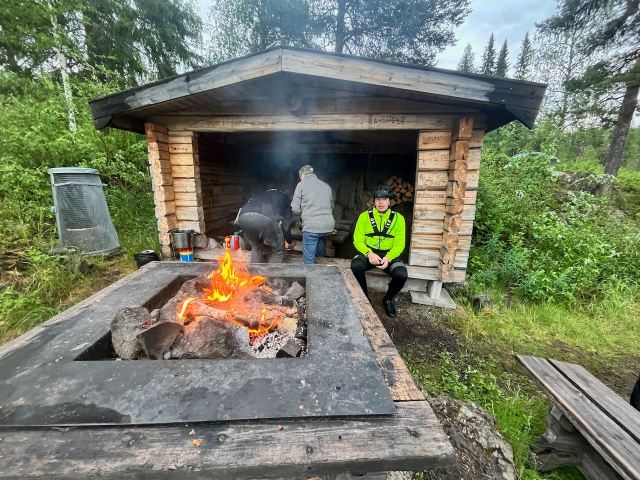
What then followed was another magic MSR moment. They guided us to a footpath next to the road, which led down to a small shelter right on the banks of the Vindel river, just across some powerful rapids. In front of the shelter, a camp fire was burning.
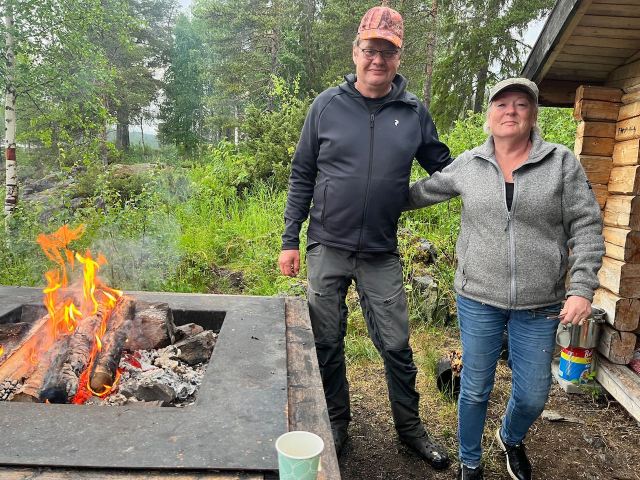
I’ve done more than 120 Audaxes over the past decade, but this was the most special control I’ve encountered. Tuomo and I enjoyed the most delicious hotdog, coffee and some fresh fruit while chatting to the volunteers. They lived locally and had been around for more than a day without rest. I told them that their task was harder than ours. The setting was epic. The river rapids, the fire, the friendly volunteers. I would have wanted to spend a day here or two. But as we had a bike ride to finish, we got back on the road within 20 minutes.

Afterwards the weather got grim. The heavens opened and we got drenched for several hours.The rain clouds were so dark that I had to turn on my front light for the first time. At least we had a nice tailwind and the road was gently descending so the cycling was not too difficult. We arrived at the final control in Åmsele at around 1:40am. The control was at the local campground.

The owners were offering some strange food cooked at an open pavilion on a wood fire – a peculiar mixture of crumbs made from a bread-like dough mixed with pork meat and eaten with butter and jam. A pretty unusual combination but this time I cherished the local food. It was absolutely delicious. Tuomo and I found empty beds in one of the campgrounds’ cabins and treated ourselves to a good four hours of sleep.
The remaining 120 kilometres on Friday morning were a breeze. The rain had disappeared and the sun was back. The road continued to go gently downhill and so did the tailwind.

Organisation
MSR was a beautifully organised event. On the weekend before the start, the organisers were offering coffee rides around Umeå for those riders who arrived early. The Scandic Plaza hotel downtown was the official headquarters, and as it was offering a discount for participants, many riders stayed there. The atmosphere was fantastic. On Sunday night, there was a marvellous pre-ride dinner outside of town at the start, and on Monday afternoon coffee and cake was served at a mansion close to the start where riders could hang out. In the evening, before the event eventually kicked off, there was another great dinner.
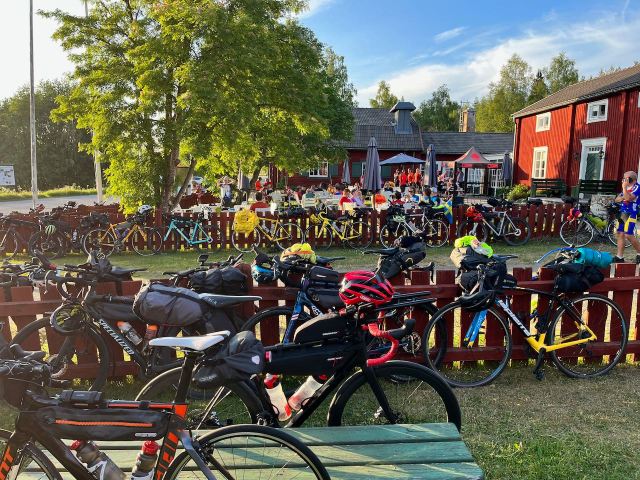
During the ride, food required some extra thought from me though – for two reasons. At some controls, there was only little food provided, and the outside options to buy some were extremely limited as the area was so remote. Moreover, I am normally not a fussy eater but I struggled with some of the food at the controls which included a lot of elk and reindeer meat. Like on all long rides, I was carrying a lot of energy bars and other snacks for emergencies. While I normally rarely touch it, I had eaten more than half of my stock after the first night. I stopped to stock up supplies at the few supermarkets and petrol stations that came along the way. On the first day I also ran out of water despite carrying two 1-litre-bottles of water. There was no option to fill them up. In Storuman, a control town after 245km, I bought an extra 0.5 litre bottle of water as a backup.

Surprises
For whatever reason, and despite the fact we were gently climbing, the first 400 or so kilometres were surprisingly easy to ride. The first 200 kilometres were among my fastest over that distance ever, with a total time including stops of just 9 hours.
For stronger riders, that’s not particularly fast. But normally on rides like PBP and LEL, my speed tends to be a bit below the overall average. Not here – during the first night of MSR, almost everyone else had overtaken me. I found that unsettling but I told myself that other riders’ pace was irrelevant for me. I also reminded myself that I was well within the time limit. I also wondered if some of the fast riders might have overcooked it early on. Judging by the number of people who abandoned the ride despite near-ideal weather conditions, and given the many struggling riders I caught up with later, that sounds well plausible .
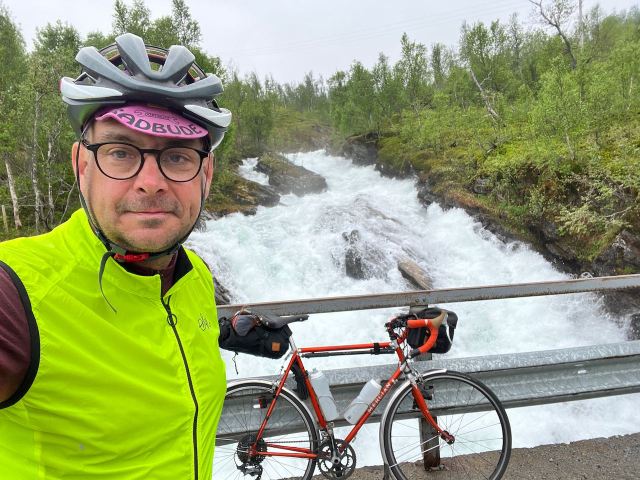
I was surprised how difficult the gravel section was. I was riding 28mm Continental GP 5000 tyres, and I am not easily impressed by poor road surfaces. Florian had warned us that half of the 20 kilometres of the dirt road between Slufors and Kittefjäll had just been resurfaced with a lot of loose gravel. He recommended following the tracks marked by vehicle tyres. But that was easier said than done. The bit was slow and tedious, in particular as it involved some climbing and some descents. I was glad that I carried a spare tyre as I damaged my front tyre on the sidewall. I was unsettled at Kittefjäll as feared I had gone past the control, and needed to ride back up a climb, but fortunately that was a misguided fear.
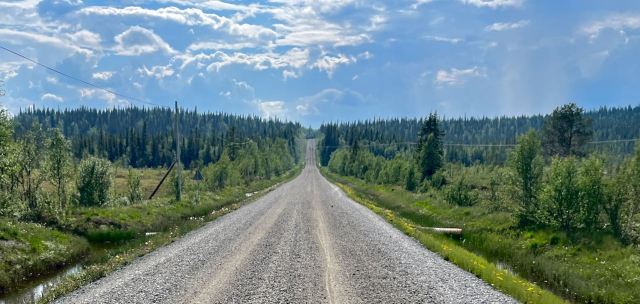
The very late start time just an hour before midnight added another level of difficulty for me. I normally like evening starts, but on other events they are usually between 5-8pm rather than close to midnight. I slept for half an hour by the roadside on the afternoon of day one but felt more tired than expected later that day. Fortunately my plan to ride through the first night and the subsequent day nonetheless worked out. I arrived at Hattfjelldall after 462km and 25 hours. I got 4 hours of really good sleep in the hotel room (pre-booked) and was back on the road at 5:15am, feeling as good as new.

Logistics
MSR’s amazing location was also its biggest drawback. The trip from Frankfurt to Umeå was 2100 kilometres, which initially had turned me off. I reconsidered after realising that MSR was starting on a Monday night, and ending on a Friday afternoon. This meant I could use both weekends to travel up north and back to Germany, and get away with using five days of holiday. (Eventually, I took the Friday before the start and the Monday after the ride off, too.)

Getting to Umeå and back still turned out to be a challenge. In theory, a new night train from Hamburg to Stockholm was the perfect option, in particular as I try to avoid flying. In Stockholm I could then jump on a train to Umeå. (I can pack my bike into a parcel that I can take on any train.) In January, I bought a first-class Interrail pass offering four days of train travel within a 30 day period for just €300 euros. Over the subsequent months, I found out that it basically was impossible to take the train in practise. Over months, it was impossible to book any ticket for the night train from Hamburg to Stockholm, neither on the Friday nor on the Saturday. The same was true for the return trip.
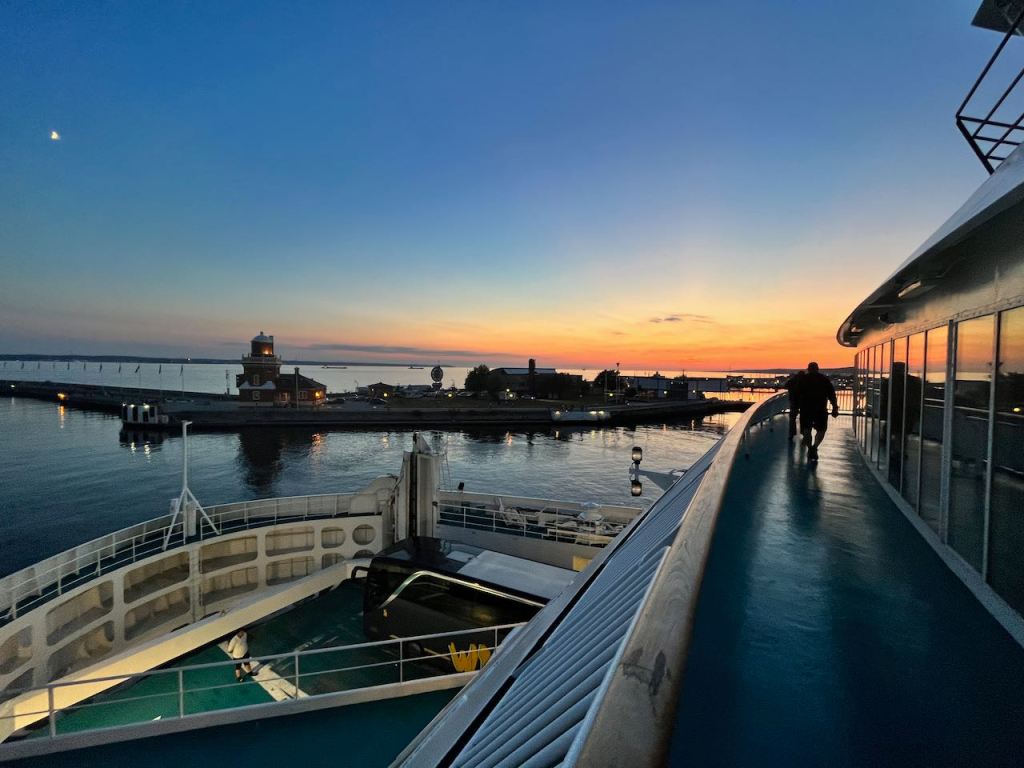
In April had enough of that uncertainty and, with a heavy heart, booked plane tickets from Frankfurt to Umeå and back. I subsequently spent hours on the phone with useless Lufthansa staff over bike spaces on the return flight to Stockholm. Then, a few weeks ahead of the ride, the outbound flight from Stockholm to Umeå got cancelled. I changed plans again. First I tried the train once more, this time looking at connections during the day. It would have entailed a stopover in Malmö, but that seemed ok. The problem this time was the connection between Hamburg and Kopenhagen. The direct trains required mandatory seat reservations and were already booked out at reasonable times.
Eventually I decided to join two German friends who planned to drive. I had initially laughed at them but called them hat in hand, asking if they could give me a lift. I was not looking forward to the two-day car journey each way, But it turned out to be a great road trip which I profoundly enjoyed too.
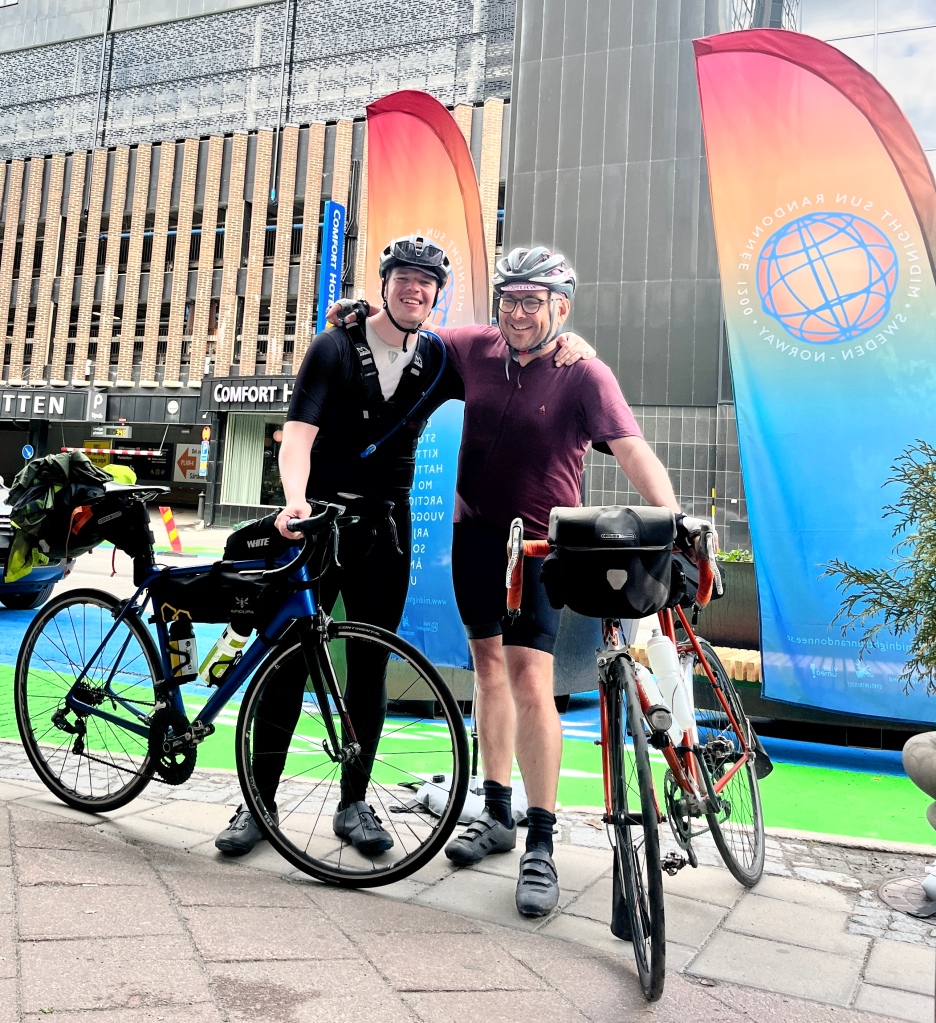
Tuomo and I returned to Umeå at lunchtime on Friday after having ridden 1226 kilometres, and with a big smile on my face. I also had some mixed emotions. I was glad that the ride had worked out so well, but was also a bit sad. I had mentally and physically prepared for the ride for more than half a year. Now, after 85.5 hours on the road, it was suddenly over.
I’ve already started to think about next year’s big ride.
Organisational data:
Day 1
Umea-Hattfjelldal: 466km / climbing: 2829 m
moving time: 21:04 hours / total time: 25:03 hours
Prebooked hotel room at Hattfjelldal, stay at the control (incl sleep) ca. 5 hours
Day 2
Hattfjelldal-Jäkkvik : 329km / climbing: 3722 m
Moving time: 16:24 hours / total time: 21:26 hours
Prebooked room at Jäckvikk, stay that the hotel (incl sleep) ca 4 hours
Day 3
Jäkkvik-Åmsele: 312km / climbing: 664m
Moving time: 14:95 hours / total time: 18:28 hours
Stay at cabin provided by organisers on campground, stay at the control (incl sleep) ca 4 hours.
Day 4
Åmsele-Umeå: 121km / climbing: 333m
Moving time: 5:07 hours / total time: 5:52 hours

“It’s fresh air!” 😂😂😂
Seriously, that is a great write-up with good photos (I spotted a particularly iconic t-shirt!).
Our son Ally enjoys marathons and triathlons and has run the Midnight Sun Marathon out of Narvik. It’s a much shorter endurance event but he’s described similar feelings about it!
Great stuff!
Ein super Artikel,der Lust auf mehr macht 😁
That’s a great read Olaf.
Many thanks for letting us into your thoughts and well done on completing the ride.
If you’re ever back in the UK and want a meet-up (and ride) please let me know.
London-Dunwich-Diss has a certain appeal………….
Wow. Just wow. I fully enjoyed reading your account of the ride and felt almost like being alongside you for it. Thank you for sharing this and congrats again for the brevet!
Great write up Olaf, and great photos. I had forgotten about several sections, including the gravel. I think you were much better organised than me. Well done!